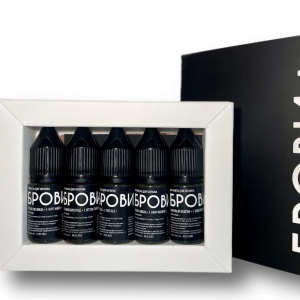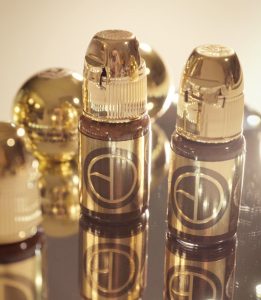
Difference between organic and inorganic pigments
Permanent makeup, also known as cosmetic tattooing, is a popular beauty trend that has gained immense popularity in recent years. The procedure involves the use of specialized pigments that are injected into the skin to enhance the appearance of eyebrows, eyeliner, and lips, among others. However, not all pigments used in permanent makeup are created equal. They are typically divided into two main categories: organic and inorganic pigments. In this article, we will explore the difference between the two and their respective benefits and drawbacks.

Organic pigments are made from natural sources such as plants, fruits, and vegetables. These pigments are derived from natural materials and are often preferred by individuals who are looking for a more natural and organic approach to their makeup routine. Some of the common organic pigments used in permanent makeup include iron oxide, ochre, and beetroot. The most popular organic permanent makeup pigment is Iron oxide: This natural mineral is derived from iron and oxygen and is commonly used to create brown, red, and orange hues in permanent makeup. It is also often used to create black pigment for eyeliner and other applications. These pigments are usually safe for use on the skin as they are less likely to cause an allergic reaction or lead to any adverse side effects. Organic pigments are also known for their ability to blend well with the natural skin tone and create a more subtle and natural-looking finish.
In contrast, inorganic pigments are made from synthetic materials that are created in a laboratory. These pigments are often more stable and have a longer lifespan compared to organic pigments. Inorganic pigments are typically more vivid and offer a wider range of colors, making them a popular choice for individuals who are looking for a bolder and more vibrant look. Some of the common inorganic pigments used in permanent makeup include titanium dioxide, and carbon black.

One of the main differences between organic and inorganic pigments is their durability. Inorganic pigments tend to have a longer lifespan,making them more resistant to fading and requiring fewer touch-ups over time. Organic pigments, on the other hand, are more prone to fading and may require touch-ups more frequently. Additionally, organic pigments tend to be more difficult to remove in case the individual wants to change the color or remove the permanent makeup altogether.
Another significant difference between the two types of pigments is their composition. Organic pigments are composed of molecules that are larger and less stable than those found in inorganic pigments. This makes organic pigments more susceptible to breaking down over time, which can lead to a less defined or blurred appearance. Inorganic pigments, on the other hand, are composed of smaller and more stable molecules, which help them retain their sharpness and definition over time.
Both organic and inorganic pigments have their benefits and drawbacks. Organic pigments offer a more natural and subtle look but may require more frequent touch-ups and may be more difficult to remove. In contrast, inorganic pigments offer a wider range of colors, are more durable, and offer sharper and more defined results. Ultimately, the choice between organic and inorganic pigments will depend on the individual’s personal preference, skin type, and the desired outcome. It is always recommended to consult with a professional permanent makeup artist to determine the best option for you.

Many of the most popular pigment brands on the market today are actually hybrid pigments, which contain a combination of both organic and inorganic inks. These hybrid pigments aim to provide the best of both worlds by offering the natural-looking results of organic pigments and the longevity and vibrancy of inorganic pigments.
By combining the best features of both types of pigments, hybrid pigments can offer a wider range of colors and shades that are long-lasting and fade-resistant, while still maintaining a more natural and subtle appearance on the skin. This hybrid approach to permanent makeup pigments has become increasingly popular among both professional artists and clients alike.
However, it’s worth noting that not all hybrid pigments are created equal, and it’s important to choose a reputable brand and consult with aprofessional permanent makeup artist to ensure that the chosen pigments are safe, high-quality, and well-suited to your individual needs and skin type.

In summary, while the debate between organic and inorganic pigments continues, the rise of hybrid pigments has allowed individuals to achieve their desired permanent makeup results while combining the benefits of both types of pigments.


